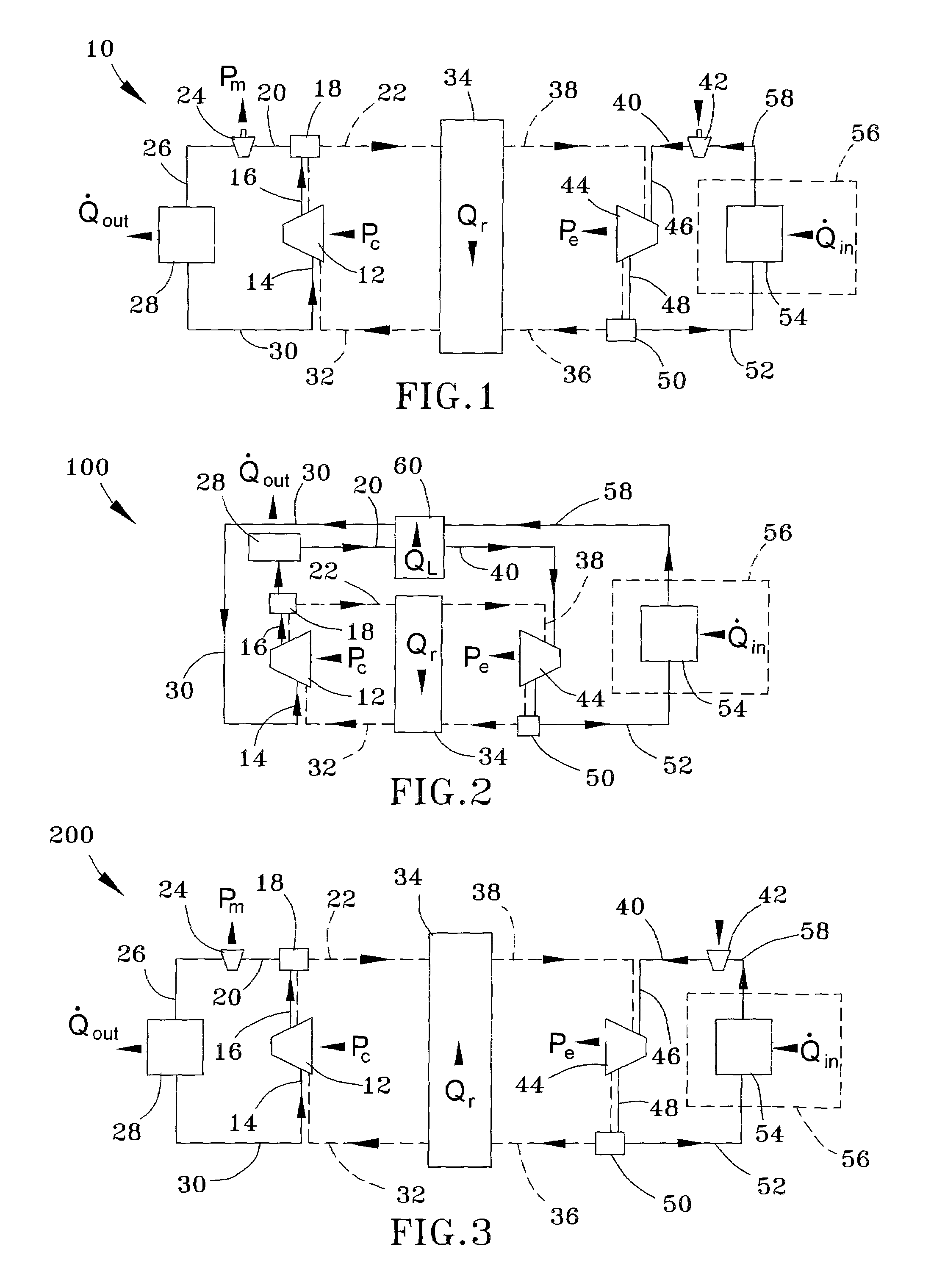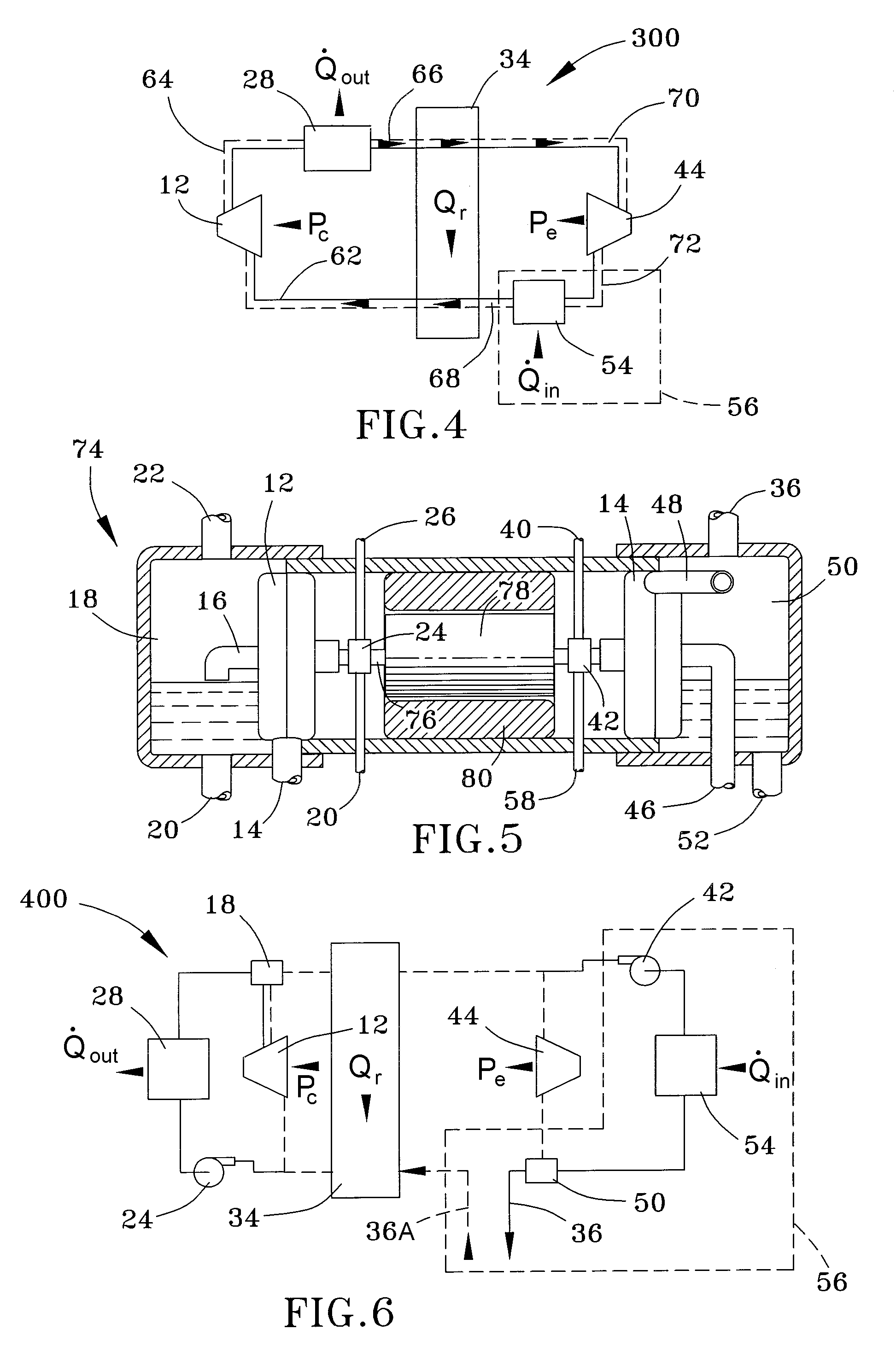Thermodynamic systems operating with near-isothermal compression and expansion cycles
a technology of thermodynamic systems and expansion cycles, applied in the field of thermodynamic systems, can solve the problems of large force on compression and expansion machinery, and inability to operate normally
- Summary
- Abstract
- Description
- Claims
- Application Information
AI Technical Summary
Benefits of technology
Problems solved by technology
Method used
Image
Examples
Embodiment Construction
[0025]The invention is described in reference to thermodynamic systems that employ Ericsson or Brayton cycles in combination with liquid flooding during compression and expansion of a compressible fluid so that the compression and expansion processes are nearly isothermal. As will be evident from the following, numerous liquids can be used as the flooding liquid and numerous gases can be used as the compressible fluid. Particular examples of suitable compressible fluids include air, argon, xenon, helium, etc., though others could also be used, with a preference for fluids that are not toxic, flammable, ozone-depleting, or potent greenhouse gases. Particular examples of suitable liquids include water, mineral oil, natural biodegradable oils such as rapeseed oil, etc. In some cases, nonvolatile liquids will likely be preferred, though it is believed that the use of a liquid (e.g., water) that partially vaporizes and condenses as it goes through compression and expansion, respectively,...
PUM
 Login to View More
Login to View More Abstract
Description
Claims
Application Information
 Login to View More
Login to View More - R&D
- Intellectual Property
- Life Sciences
- Materials
- Tech Scout
- Unparalleled Data Quality
- Higher Quality Content
- 60% Fewer Hallucinations
Browse by: Latest US Patents, China's latest patents, Technical Efficacy Thesaurus, Application Domain, Technology Topic, Popular Technical Reports.
© 2025 PatSnap. All rights reserved.Legal|Privacy policy|Modern Slavery Act Transparency Statement|Sitemap|About US| Contact US: help@patsnap.com



